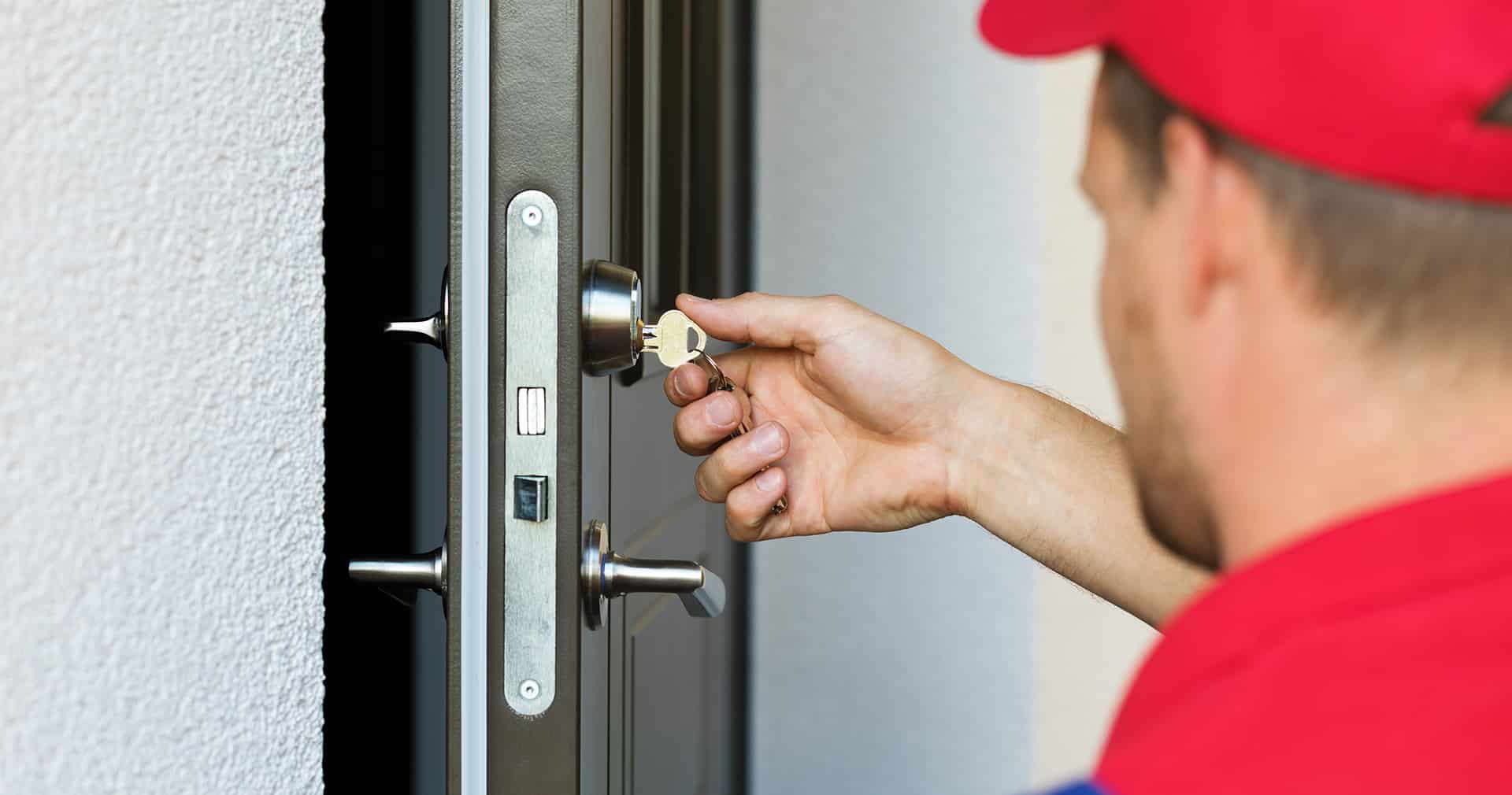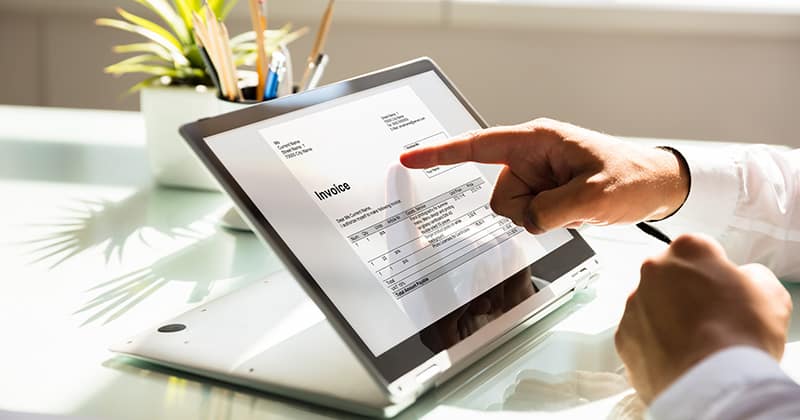
You’re a locksmith, a member of a profession that dates back to antiquity. You like solving problems and working with your hands. People trust you to play a vital role in controlling their security.
In your line of work, every detail matters. Here in the 21st century, that includes how you handle your finances. One crucial aspect of a locksmith business is creating a professional invoice.
Invoicing is not just a piece of paper. Your locksmith invoice says you are a professional. It is a tool to ensure fair compensation for your expert locksmith services. When you create your own locksmith invoice template, you’ll streamline your business with a polished framework. You simply fill in the details for each job.
In this article, we’ll delve into why invoicing is so important for locksmiths. We’ll discuss the right time to send an invoice, how often to send invoice reminders, and some software tools out there to help you. We’ll guide you on how to create your own locksmith invoice template. Finally, we’ll provide a link to a downloadable locksmith invoice template that you can use for free.
Let’s dive in.
Why Locksmiths Should Send Professional Invoices

What, exactly, is an invoice?
Knowing the difference between a proposal, a quote, a receipt, and an invoice is important for clear communication. It makes sure that you and your clients are on the same page.
- Proposal — outlines the scope of work and is often used to secure a project
- Quote — provides an estimated cost for services
- Receipt — acknowledges payment
- Invoice — requests payment for completed services or delivered products
Simply put, an invoice is a document given to a customer that lists the goods or services provided and their prices. Regardless of the job’s size, it’s smart to always send professional invoices for your locksmith services.
Here are five reasons why:
1. Reflects professionalism
Your invoices are concrete representations of your professionalism. They show your clients that you are a trustworthy and reliable locksmith who puts your name and reputation on your work. Transparency leads to satisfied clients. Your customers will more likely refer your locksmith services to other community members and hire you again.
2. Provides clear documentation
Professional invoices break down the locksmith services you’ve provided. They state the associated costs and the payment terms. Having this documentation is crucial in resolving any disputes that may arise in the future. It also helps you and your client keep track of the work you’ve done.
3. Encourages timely payments
Well-organized locksmith invoices make it easy on your clients. The payment terms and due dates are clear. When clients know exactly when and how to pay, they are more likely to fulfill their obligations.
4. Simplifies legal and tax compliance
Professional invoices help you stay on the right side of the law. They make tax reporting more straightforward. A record is necessary for tax write-offs if an invoice goes unpaid.
5. Streamlines business growth and efficiency.
Professional, organized records track your financial performance. You can identify areas that need improvement and make informed business decisions. There is a locksmith software out there that streamlines the process.
Well-managed invoicing contributes to better cash flow management. It saves you time and effort, letting you focus on what you do best—locksmithing.
When Is the Right Time to Send an Invoice to Your Locksmith Customers?
Typically, the right time to send an invoice to your locksmith customers is after you have completed the services. Sending a professional invoice right after the work is done ensures your client understands the costs. It also encourages prompt payment.
Writing the invoice at the job site can be practical, especially for smaller jobs when the client is present. You should provide the client with a finalized invoice immediately so they can review the charges and pay on the spot.
However, rushing to create an invoice at the job site can also lead to errors or omissions. For larger or more complex projects, it may be wiser to provide a professional, well-prepared invoice after completing the work. This maintains a high level of professionalism and ensures you include all the services you have provided.
Invoice Reminders
If the due date of the invoice for your locksmith services has passed, send the client a gentle reminder. Give the client a short grace period to make the payment, from a few days to about a week. Follow up by sending friendly reminders at regular intervals, about every two weeks.
Avoid overwhelming the client with too many reminders in a short span, and always maintain a professional and polite tone. There’s also automated invoicing software that can track unpaid invoices for you.
How to Keep Track of Locksmith Invoices and Payment Status

Keeping track of your locksmith invoices and payment status is essential for the financial health of your business. You can do it manually like the locksmiths of days gone by. Or you can use a modernized invoicing and payment tracking tool, like Service Fusion, to streamline the process.
You should track your locksmithing income regularly, whether monthly, weekly, or even daily. This way, you know how much money you bring in and where it comes from.
As accounting becomes ever more digitalized, it makes sense to use standardized forms, templates, and software.
FROM ONE OF OUR PARTNERS: Make it Easy for Clients to Pay with Joist Payments
An invoice is also crucial for tax purposes. You create a paper trail by entering an invoice into your accounting system. It’s on the books. This way, in case you have an unpaid invoice, there is a record of your work.
Instead of counting income after you have received payment, you record the invoice when you complete the job. If it becomes clear that the invoice will go unpaid, you can write it off.
When you create a clear, well-organized invoice for each project, you’ll have the critical details of every client at your fingertips. Whatever bookkeeping system you use, your locksmith invoice will be the foundation.
FROM ONE OF OUR PARTNERS: Invoicing Tips: Can You Write off Unpaid Invoices?
How to Create Your Own Locksmith Invoice Template
Once you create your own basic locksmith invoice template, you can simply fill in the details and all the services for each client. The layout is always the same. Here is what information your locksmith invoice template should include:
Business information
Add your locksmith’s business name and contact information at the top of your invoice. Be sure to include your distinct logo. A logo helps identify your brand and provides clients with your contact details.
Client details
Create a section for the name of the client or company, as well as their contact information. Include their address, email, and phone number.
Invoice header
Include a clear invoice header to provide essential information:
- Invoice number
- Service date
- Invoice date
- Due date
Description
Give details of each service performed:
- Rate — include the rate or price per unit of service
- Quantity — specify the quantity or hours for each service
- Amount — calculate the cost for each service (Quantity x Rate)
Additional charges
If applicable, include sections for any extra charges, such as materials and travel fees. If it is a mixed invoice with credit and debit charges on the same bill, add any discounts here.
Total
Add up all the charges to arrive at the total amount due.
Terms and payment details
Outline your payment terms and methods. Repeat the payment due date. List what payment methods you accept, such as cash, check, credit card, bank payment, and so on. State your late payment policy, including any late fees.
FROM ONE OF OUR PARTNERS: How to State Invoice Payment Terms (with Example Wording)
Get Your Free Locksmith Invoice Template

We have created a simple invoice template that can be customized to suit your locksmith business. It’s designed with small and medium-sized home service providers in mind. There are sections for all the information you need to keep accurate records.
By downloading our free invoice template, you can fill in the basics before you even begin the job.
5 Invoicing Tips & Tricks
Now that you know how to create a locksmith invoice template, let’s review a few tips and tricks to be sure that you get paid promptly:
1. List a due date.
Like the due date for a library book, your invoice should have a due date for payment. Most people respect deadlines, and it gives your clients a clear understanding of when payment is expected.
2. Offer a variety of payment methods.
Some people like cash. Others prefer credit cards or digital wallets. Offering different payment methods makes things convenient and speeds up accounting.
3. Send your invoice to the right person.
Cut through the red tape. Get the name and contact information of the person who should receive the invoice upfront and add it to your invoice before you even start the job. This way, your invoice ends up in the right inbox.
4. Consider charging late payment fees (carefully).
You may want to add a late payment fee to provide an incentive to pay on time. Clearly outline late fee policies on your invoices to maintain good client relationships.
5. Automate your invoicing.
Go digital and streamline your accounting process. Who has the time for manual paperwork when there are locks to pick?
FROM ONE OF OUR PARTNERS: Accepting Credit Card Payments as a Home Service Contractor
About the Author
Jeremy is the Vice President of Content & Training of Service Fusion, an all-in-one field service management software. He has over 42 years of experience in the HVAC and electrical industries, and regularly speaks at industry events nationwide.
Related Posts
Top 40 Must-Have Plumbing Tools
Continue ReadingService Fusion Edge: The Smarter Way to Save, Learn, and Grow. All for Free.
Continue ReadingStay Informed
Get the latest news and insights plus, Service Fusion offers and updates.Thank you for your submission.

SHARE